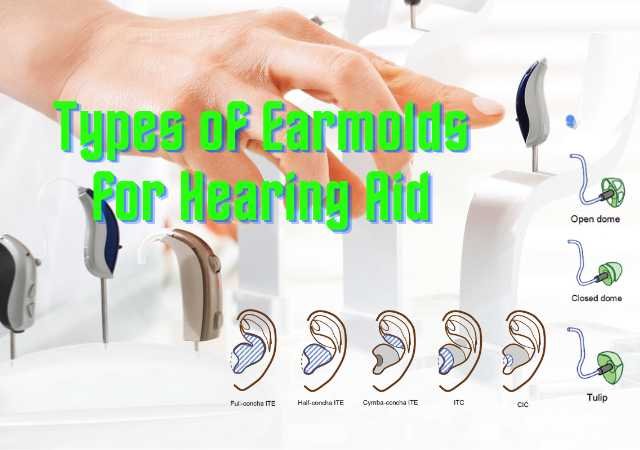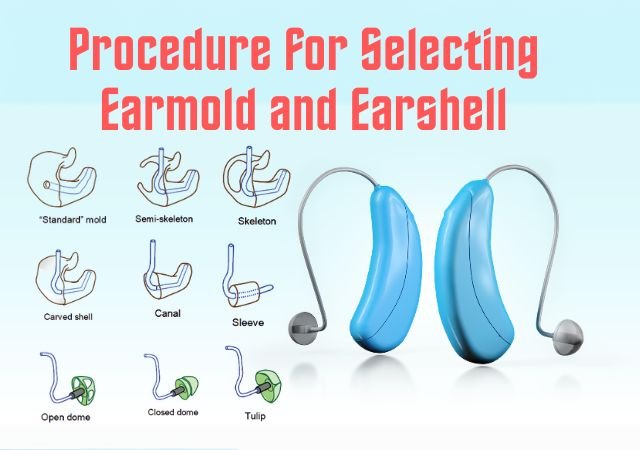Different Types of Stimuli used in Speech Audiometry: Speech Audiometry is a auditory assessment using different types of speech stimuli. In Speech Audiometry for measuring threshold two different types of tests speech detection threshold (SDT) and speech recognition threshold (SRT). Both tests are measured by speech stimuli.
Table of Contents
ToggleTypes of Stimuli used in Speech Audiometry:
There are many types of stimuli used in speech audiometry:
Spondee (or Spondaic) Words:
- Spondaic words are generally used for obtaining SDTs and SRTs and are recommended by ASHA (1988).
- Spondee (or spondaic) words, which are two-syllable words that have equal emphasis on both syllables, such as “baseball” or “railroad.” Spondaic words lend themselves well to this use because a very small intensity increase causes the recognition of spondees to rise very rapidly from 0 to 100%. The SRT has also been called the spondee threshold (ST) when measured with spondaic words (ASHA 1979).
- Lists of spondaic words for assessing hearing loss for speech were first developed at the Harvard Psychoacoustic Laboratories (PAL) by Hudgins
et al. (1947).
Monosyllabic Words:
- The most commonly used materials for clinical speech recognition testing are monosyllabic words that are presented in an open-set format.
- Monosyllabic words are those which cannot be separated into two or more syllables. Each syllable has to contain no less than one consonant and one vowel, or only a vowel. For example – Cat, Rat, Hat etc.
- Historically, word lists such as:
- The Phonetically Balanced 50 (PB-50; Egan, 1948),
- The CID Auditory Test W-22 (CID W-22; Hirsh et al., 1952), and
- The Northwestern University Auditory Test Number 6 (NU No. 6; Tillman and Carhart, 1966)
have been used to assess word recognition performance in a quiet background during audiologic evaluations.
Phonetically Balanced 50 (PB-50; Egan, 1948)
- The initial use of monosyllabic words for speech recognition testing is attributed to Egan (1948) who worked in thePAL at Harvard University.
- The six criteria were:
- (1) monosyllabic structure,
- (2) equal average difficulty of lists,
- (3) equal range of difficulty of lists,
- (4) equal phonetic composition of lists,
- (5) representative sample of American English, and
- (6) familiar words.
- His original pool of 1,000 words was divided into 20 lists of 50 words, which collectively are known as the PAL PB-50 word lists.
- Each list was considered to be phonetically balanced such that the 50 words that composed a list were a proportionally correct representation of the phonetic elements in English discourse.
CID Auditory Test W-22 (CID W-22; Hirsh et al., 1952)
- Hirsh et al. (1952) had five judges rate the familiarity of the 1,000 monosyllabic words selected by Egan for the PB-50 word lists, and 120 of the PB-50s were selected along with 80 other words to compose the new word lists.
- These 200 very common words were selected and phonetically balanced into four 50-word lists known as the CID W-22 word lists.
The CID W-22 word lists were recorded onto magnetic tape as spoken by Ira Hirsh who monitored his voice on a VU meter stating the carrier phrase “You will say” and letting each target word fall naturally at the end of the phrase. - The CID W-22 word lists are some of the most popular word lists used by audiologists for measuring suprathreshold word recognition ability in quiet.
Northwestern University Auditory Test Number 6 (NU No. 6; Tillman and Carhart, 1966)
- Lehiste and Peterson (1959) devised lists of CNCs (consonant–syllable nucleus [vowel]–consonant) that were phonemically balanced versus phonetically balanced.
- Lehiste and Peterson argued that phonemic balancing could be accomplished by allowing for the frequency of occurrence of each initial consonant, vowel nucleus, and final consonant to be similar across CNC word lists.
- The Lehiste and Peterson lists were condensed into four lists of 50 words known today as the NU No. 6.
- 50 words were included in each test list to facilitate phonetic balancing and to allow for a simple conversion from number correct to percent correct following testing.
- Studies have examined the benefits of abbreviating the number of words used per list from 50 to 25 with mixed results in terms of test–retest reliability (Beattie et al., 1978; Elpern, 1961).
Sentence-level test:
- Sentence-level tests were developed at Bell Laboratories (Fletcher and Steinberg, 1929) and were used during World War II to evaluate military communication equipment (Hudgins et al., 1947).
- Until the development of the CID Everyday Sentences (Silverman and Hirsh, 1955), no sentence test had received clinical acceptance.
- The CID sentences consist of 10 lists of 10 sentences each with 50 key words in each list.
- Interrogative, imperative, and declarative sentences are included.
- Responses can be spoken or written and are scored as the percentage of key words correctly recognized.
- For the profoundly impaired patient population, the City University of New York (CUNY) Sentences (Boothroyd et al., 1988), which consist of 72 sets of topic-related sentences, were designed to assess the use of cochlear implants and tactile aids as supplements to speech reading.
- Each sentence in a set is about one of 12 topics: food, family, work, clothes, animals, homes, sports/hobbies, weather, health, seasons/holidays, money, or music. Each set contains four statements, four questions, and four commands and one sentence of each length from 3 to 12 words, for a total of 102 words per set.
- Performance is scored as the number of words correct.
Nonsense syllable test/Phoneme recognition test:
- The effects of lexical context and word familiarity on test performance can be minimized by the use of nonsense syllable and/or closed-set phoneme recognition tests.
- Nonsense syllables were one of the first materials used to assess speech recognition ability during the development of telephone circuits at Bell Telephone Laboratories (Fletcher and Steinberg, 1929).
- Clinical use of nonsense syllables for those with hearing loss did not occur until the 1970s when two carefully developed tests became available—the CUNY Nonsense Syllable Test (CUNY-NST; Levitt and Resnick, 1978) and the Nonsense Syllable Test (NST; Edgerton and Danhauer, 1979). The CUNY-NST is a closed-set test consisting of seven subtests, each of which has seven to nine consonant–vowel (CV) or vowel–consonant (VC) syllables.
- The CUNY-NST assesses perception of the consonants most likely to be confused by individuals with hearing loss using three vowel contexts. The Edgerton–Danhauer NST is an open-set test consisting of 25 nonsense bisyllabic CVCV items, allowing for assessment of the perception of 50 consonant
and 50 vowel stimuli. More recently, Boothroyd et al. (1988) described the Three Interval Forced Choice Test of speech pattern contrast perception (THRIFT), an NST that can be used with children 7 years of age or older (Hnath- Chisolm et al., 1998). - Classic tests of phoneme recognition include the Modified Rhyme Test (MRT; House et al., 1955; Kruel et al., 1968) and its variations (e.g., Rhyming Minimal Contrasts Test (Griffiths, 1967) and the California Consonant Test (CCT; Owens and Schubert, 1977).
- The MRT consists of 50 test items each with six response alternatives.
- Twenty-five of the items differ by the initial consonant (i.e., bent, went, sent, tent, dent, and rent), and the other 25 items differ by the final consonant (i.e., peas, peak, peal, peace, peach, and peat).
- The CCT also consists of 100 items but uses a four-choice, rather than a six-choice, response format in assessing the perception of 36 initial consonant items and 64 final consonant items.
- A closed-set format is also used in the Speech Pattern Contrast (SPAC) test (Boothroyd, 1984), which was designed to assess the ability to perceive both suprasegmental (i.e., stress and intonation) and segmental phonologically (i.e., vowel height and place, initial and final consonant voicing, continuance, and place) relevant distinctions.
- Test length of SPAC is minimized by combining two segmental contrasts in one subset (e.g., final consonant voicing and continuance) with four items (e.g., seat-seed-cease-sees).
- The information provided about the details of an individual’s speech perception ability can be quite useful when assessing the need for and the benefits of hearing aids and cochlear implants for both children and adults.
References:
⇒ https://www.ishaindia.org.in/pdf/Guidelines-Standard-Audiometric-Screening-Procedures.PDF
⇒ Essentials of Audiology – Stanley A. Gelfand, PhD (Book)
⇒ Handbook of Clinical Audiology – JACK KATZ, Ph.D. (Book)
You are reading about:
Different Types of Stimuli used in Speech Audiometry
Share this:
- Click to share on X (Opens in new window) X
- Click to share on Facebook (Opens in new window) Facebook
- Click to share on LinkedIn (Opens in new window) LinkedIn
- Click to share on Telegram (Opens in new window) Telegram
- Click to share on WhatsApp (Opens in new window) WhatsApp
- Click to print (Opens in new window) Print








0 Comments